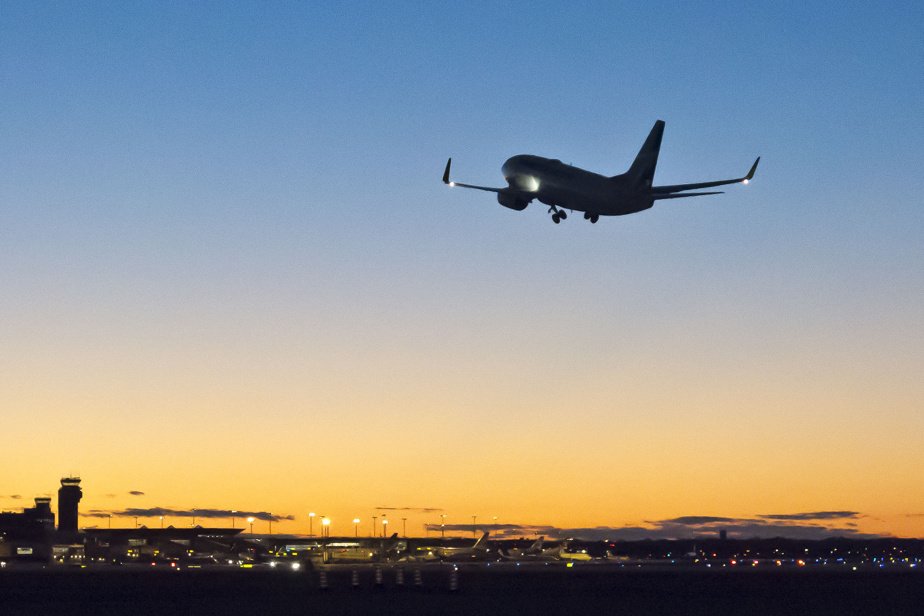It’s hard to know when is the right time to buy your plane ticket in order to get the best price. Prices are generally on the rise and fluctuate more and more due to dynamic pricing. To put the odds on your side, planning ahead and turning to a travel agency are among the most accessible options.
“You have to see it like the stock market, illustrates Marc-Antoine Vachon, holder of the Transat Tourism Chair and professor at UQAM. We manage our risk. If you are flexible on your travel dates, you can take a chance and not book right away. But the ticket may never come down again, as you may be lucky. »
The travel industry is one of the sectors, such as hotels and event ticketing platforms, where dynamic pricing is rapidly taking hold. This concept consists of making prices fluctuate according to market conditions. Generally, they climb when demand is strong, as is the case for the summer season which is upon us.
As airlines collect more and more data about their customers, they have a better idea of how much a traveler is willing to pay for a plane ticket.
The COVID-19 pandemic has prompted most vacationers to go further in advance when planning their stay away. There are always exceptions, but in the current context, this behavior remains one of the ways to protect against sudden price fluctuations, believes Mr. Vachon.

PHOTO DAVID BOILY, LA PRESSE ARCHIVES
Marc-Antoine Vachon, holder of the Transat Chair in Tourism and professor at UQAM
There are several advantages. The company, knowing that it is securing a client, will generally offer better rates. We come to encourage planning behavior.
Marc-Antoine Vachon, holder of the Transat Chair in Tourism and professor at UQAM
According to data compiled earlier this month by Hopper – a Montreal application that suggests when to buy your plane ticket at the lowest price – fares in the domestic market have increased slightly in view of the summer season. At around $650 for a round trip, this price is slightly higher than last year, but 17% lower than what was observed in 2019.
However, the picture is different when looking outside the country’s borders. Internationally, prices continue to rise, while searches for tickets have practically returned to the levels observed before the health crisis.

A changing model
The model varies from place to place, but carriers are changing the way tickets are sold. In the past, prices were fixed for routes and they did not change. Subsequently, the price categories made their appearance. Slowly but surely, these are giving way to undefined price points, underlines the head of revenue management at low-cost carrier Flair Airlines, Jean-Loup Senski.
“Rather than going from $100 to $120, for example, the price can adjust to $101, $103,” he explains in an interview. With machine learning (machine learning), it is a way of maximizing revenue and filling an aircraft. »

HO PHOTO, THE CANADIAN PRESS ARCHIVES
At Flair Airlines, approximately 80% of transactions are carried out through its website.
At Flair, about 80% of transactions are made through its website, points out Mr. Senski. This is what allows the Edmonton-based company to accelerate the implementation of dynamic pricing. Airlines like Air Canada and WestJet, some of whose volume depends on purchases made by consumers through travel agencies, have certain restrictions.
The main reason: global distribution services, which are hubs of air offers. These platforms allow travel agencies to access a wide range of fares offered by various suppliers. They constitute, in a way, a territory that is still impossible to conquer for dynamic pricing and its variations.

Among travel agencies, apart from a return of demand in view of the summer, the effects of dynamic pricing have not yet been observed in consumer behavior, estimates Moscow Côté, president of the Association of agents de voyages du Québec (AAVQ).
“We have access to real-time airline rates,” he says. We know how to avoid sleight of hand where the consumer finds himself in front of an interesting price with very rigid conditions. For a flight between Montreal and Paris at $1000 in high season, I still have access to this rate if the company comes up with a higher dynamic price on its website. »
Mr. Senski brings a caveat. This former revenue manager at the Marriott hotel chain and at WestJet believes that the traveler is not always a winner.
“The price can sometimes be higher because for the airline, the aspect of flexibility disappears. The company will want to protect itself. We don’t want to take the risk. »

PHOTO MARTIN TREMBLAY, PRESS ARCHIVES
Travelers at Montreal-Trudeau Airport
Surprises
The algorithms put in place by air carriers can also have unusual effects on the market, according to a study from Yale University which has just been updated. Its authors, professors Aniko Öry and Kevin Williams, have identified what is called the “danger” when two companies compete for customers months before the retail.
If the first lowers its prices slightly to attract travelers, the algorithm of its rival will detect the change and adjust.
“Over time, the two airlines become so oversold that they both sell too many seats too early, leaving too few seats available for travelers who book late,” the researchers write. This is hurting airlines that rely on the high prices that last-minute customers are willing to pay as well as customers who need a flight the next day. »
This scenario is less likely to occur in Canada, Vachon believes, where there are fewer players in the competitive landscape. Still, findings from Yale researchers suggest vacationers who book ahead got a better price.
Learn more
-
- 4.5 million
- Passengers who passed through Montreal-Trudeau from January to March, almost the same volume as in 2019, before the pandemic
SOURCE: Montreal airports
